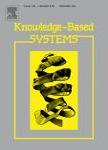版权所有:内蒙古大学图书馆 技术提供:维普资讯• 智图
内蒙古自治区呼和浩特市赛罕区大学西街235号 邮编: 010021

作者机构:Shandong Univ Sci & Technol Coll Mech & Elect Engn Qingdao 266000 Peoples R China Rizhao Emergency Management Bureaua Rizhao 276800 Peoples R China
出 版 物:《KNOWLEDGE-BASED SYSTEMS》 (Knowl Based Syst)
年 卷 期:2025年第311卷
核心收录:
学科分类:08[工学] 0812[工学-计算机科学与技术(可授工学、理学学位)]
基 金:National Natural Science Foun-dation of China Natural Science Foundation of Shan-dong Province [ZR2022ME119, ZR2024ME236]
主 题:Multi-scale convolutional neural network Multi-layer attention mechanism Joint cross-domain adaptation Fault diagnosis
摘 要:The fault diagnosis of rotating components such as bearings and gearboxes is crucial for ensuring the safe operation of machinery. However, traditional deep learning diagnostic models often exhibit poor performance when facing changes in operating conditions. To address this issue, this paper proposes an adaptive multi-scale attention adversarial network (AMSAAN). First, a combination of one-dimensional (1-D) wide convolution and two-dimensional (2-D) multi-scale convolution is employed to extract long-term temporal features and shortterm multi-scale features from the samples. Second, to reduce the impact of noise, a multi-layer attention feature refinement mechanism is utilized to progressively refine the extracted features layer by layer. Cross- domain adaptation is carried out in two parts: domain shift reduction and feature alignment. The first part uses a dual-domain distance approach combining correlation alignment (CORAL) distance and Wasserstein distance to reduce domain distribution differences. The second part integrates contrastive loss and domain adversarial mechanisms to achieve domain feature alignment. This method comprehensively considers both supervised domain adaptation (SDA) and unsupervised domain adaptation (UDA). The proposed AMSAAN effectively extracts domain-invariant features, reduces noise impact, and achieves domain adaptation. The effectiveness of AMSAAN is demonstrated through experimental results based on two datasets of bearings and planetary gearboxes. AMSAAN achieves a diagnostic accuracy of over 97 % across multiple transfer tasks under varying operating conditions, and the noise resistance of the model has been demonstrated to be superior to that of other methods.